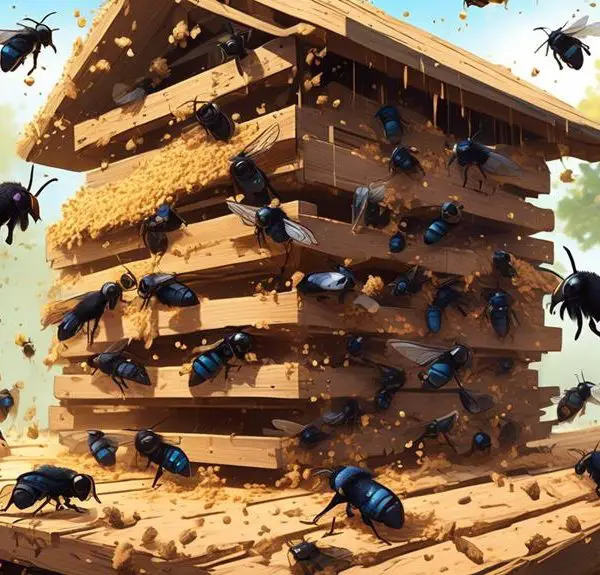Baffled by bees and their capabilities? Explore the surprising question: Can carpenter bees swim, and dive into the world of entomology.
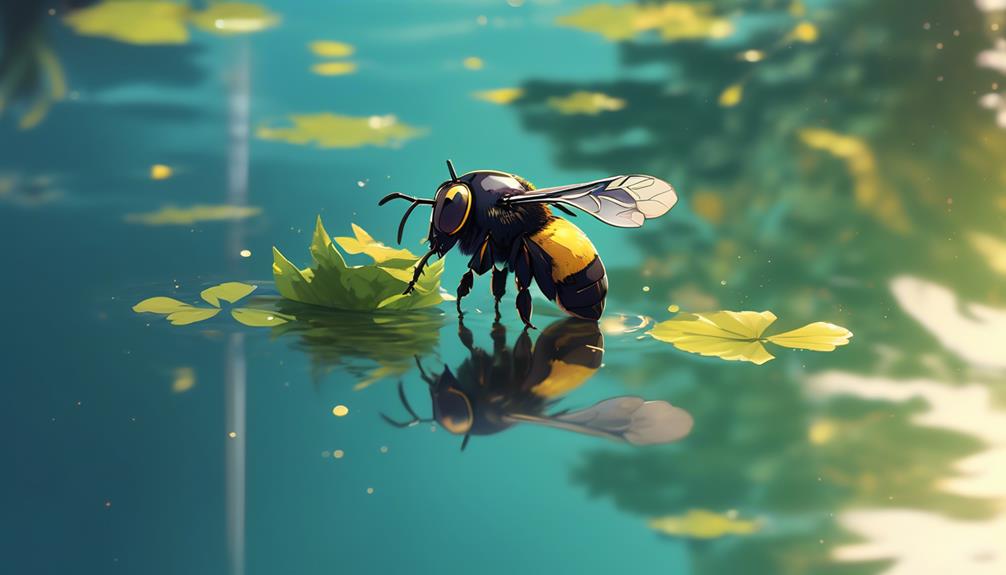
Can Carpenter Bees Swim
Imagine you're a carpenter bee, buzzing with life, but caught in a sea of confusion when a splash of water comes your way. Can you, as a carpenter bee, swim through this unexpected aquatic obstacle or are you destined to be a shipwreck on this tiny ocean?
This may seem like an odd question, but the answer holds fascinating implications for the world of entomology. As you begin to ponder this, you'll find yourself entangled in a web of science, curiosity, and wonder, itching to unravel the truth.
Key Takeaways
- Carpenter bees have adaptations that allow them to survive in water, despite not being natural swimmers.
- Their hydrophobic exoskeleton serves as a buoyancy aid and allows them to float on the water's surface.
- Carpenter bees can create air bubbles to stay afloat when submerged in water.
- They rely on their powerful legs to push against the water and propel themselves back into the air.
Understanding Carpenter Bees
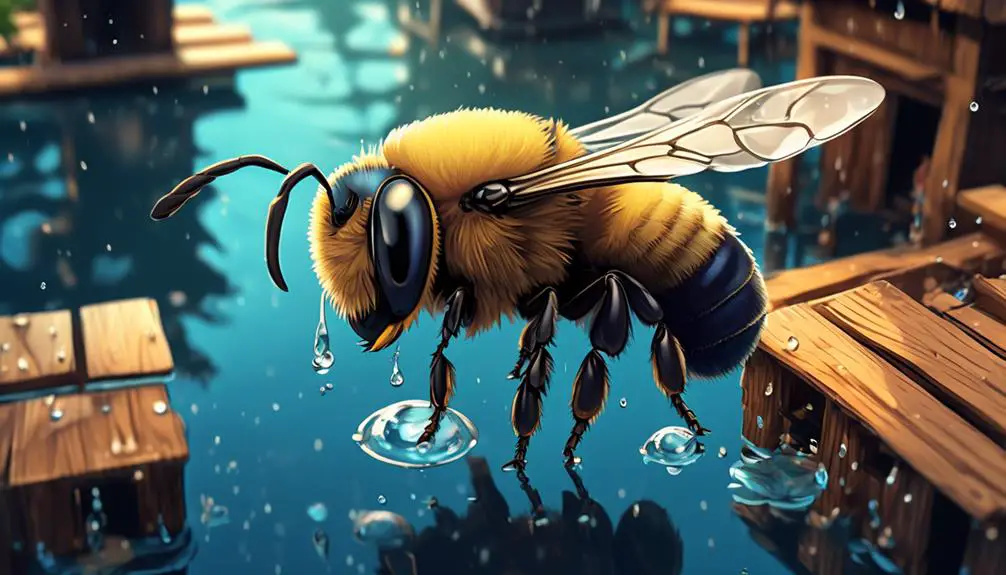
To truly grasp the unique behaviors of carpenter bees, it's important to delve into their biology, habitat, and lifestyle. You need to understand how these insects are biologically designed and how their environment influences their behavior.
Carpenter bees are a large, solitary species that are capable of drilling into wood to make their nests. They're not your typical honeybee. Their body structure is more robust, with a shiny, black, hairless abdomen. Unlike communal bees, they don't build hives but instead bore into wood to form individual cells for their larvae. It's a fascinating adaptation that shows the flexibility of life.
When it comes to habitat, these bees aren't picky. They can thrive in a variety of environments, provided there's wood available for nesting. They're common in forested areas, gardens, and even urban settings. It's their adaptability that has allowed them to spread across various regions.
Carpenter Bees and Water Interaction
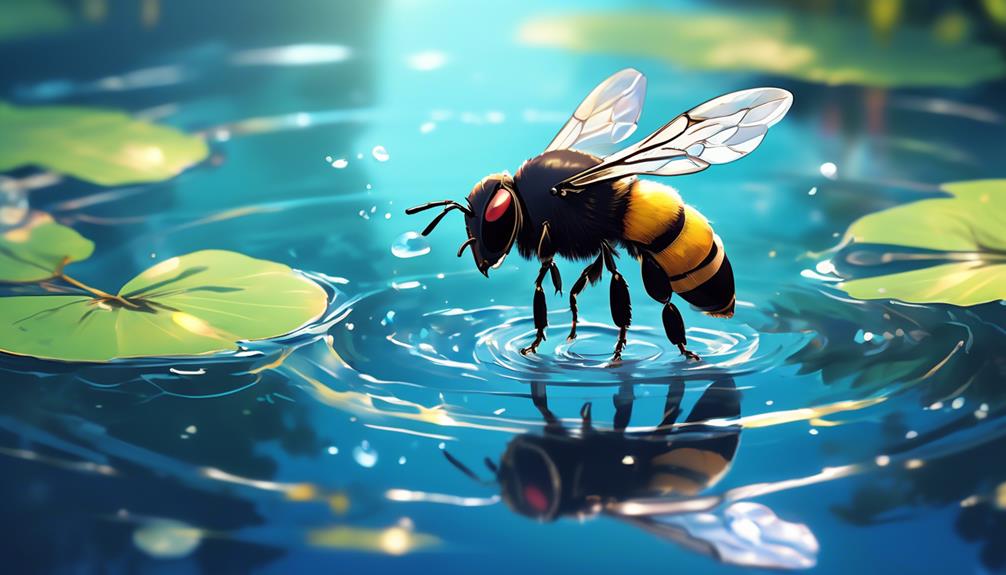
Ever wondered how carpenter bees interact with water, given their wood-centric lifestyle? You might assume they avoid it at all costs, but that's not entirely accurate. Let's delve deeper into this intriguing topic.
Carpenter bees, like other insects, require water for survival. They often source it from dew and nectar. They aren't particularly known for their swimming capabilities, but they can float on water due to the hydrophobic properties of their exoskeleton. However, prolonged exposure to water can be harmful as it hampers their ability to fly and can lead to their demise.
To provide a clearer understanding, consider this table:
Carpenter Bees | Interaction with Water |
|---|---|
Water Source | Dew and Nectar |
Swimming | Can Float |
Prolonged Exposure | Hinders Flight |
Outcome | Possible Demise |
The interaction between carpenter bees and water is complex, shaped by the balance between necessity and the inherent dangers water presents. It's a classic case of nature's delicate balancing act, where survival often hangs in the balance.
The Physics of Insect Swimming
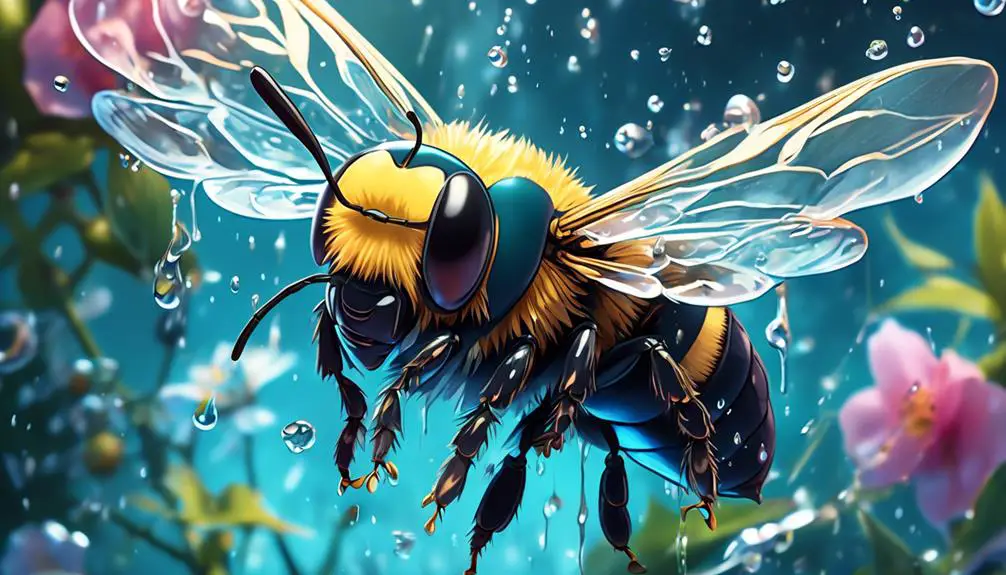
Diving into the physics of insect swimming, you'll find that it's not just about being buoyant, but involves complex mechanisms and adaptations that allow these small creatures to navigate through water. It's a multifaceted interaction of body shape, leg movement, and hydrodynamic forces.
The physical attributes of insects, such as their lightweight exoskeleton and water-repellent hairs, increase their buoyancy, enabling them to float. Their bodies are streamlined, minimizing water resistance when they move. The legs of swimming insects are often fringed with hairs, increasing the surface area and providing more push against the water.
Insect swimming also involves a specific pattern of leg movement, akin to the breaststroke in humans. This motion, combined with the hydrodynamic forces acting on their bodies, propels them forward.
Insects can also control their depth by adjusting the volume of air in their respiratory system, much like a submarine. They've evolved to exploit the physics of their environment, creating a fine-tuned system of locomotion that's both effective and energy-efficient.
Observations of Carpenter Bees in Water
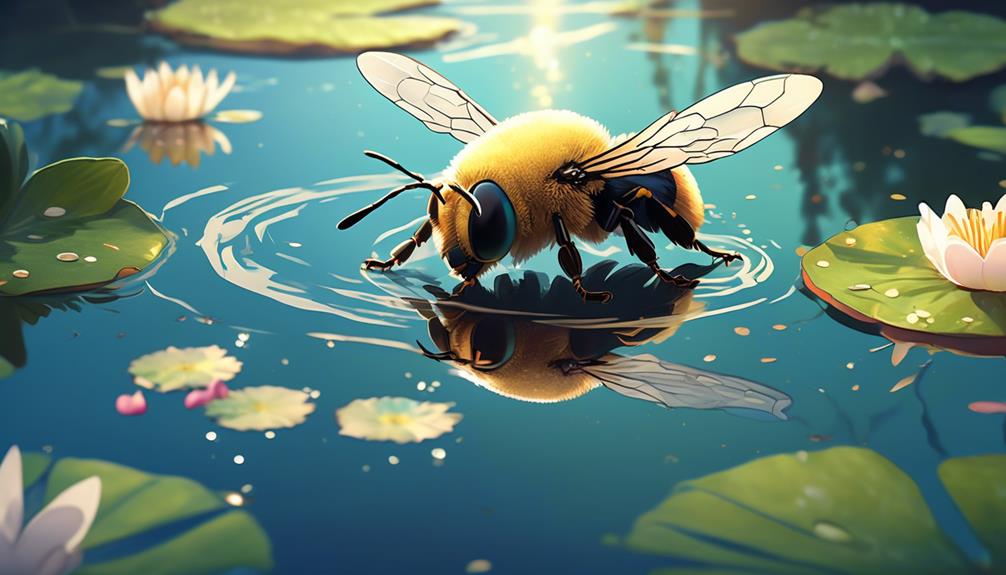
Remarkably, when observing carpenter bees in water, you'll find they're not natural swimmers, but these insects have unique adaptations that allow them to survive an unexpected plunge. Their robust, hydrophobic exoskeleton serves as a buoyancy aid, preventing them from sinking. This physical attribute, alongside their innate ability to create air bubbles, allows them to float on water surfaces.
You'll notice that when submerged, a carpenter bee appears to struggle. It's not because they're drowning, but rather they're trying to break the water's surface tension to get airborne again. Their wings, designed for aerial maneuverability, aren't as effective in water. Therefore, they must rely on their powerful legs to push against the water and propel themselves back into the air.
Scientifically, this behavior is known as 'surface skimming'. It's a survival mechanism that allows them to escape aquatic predators or accidental water traps. While they're not built for aquatic environments, their adaptability makes them capable of handling such situations.
Thus, while carpenter bees may not be swimmers in the traditional sense, their ability to navigate water when required is a testament to their resilience.
Implications for Bee Conservation
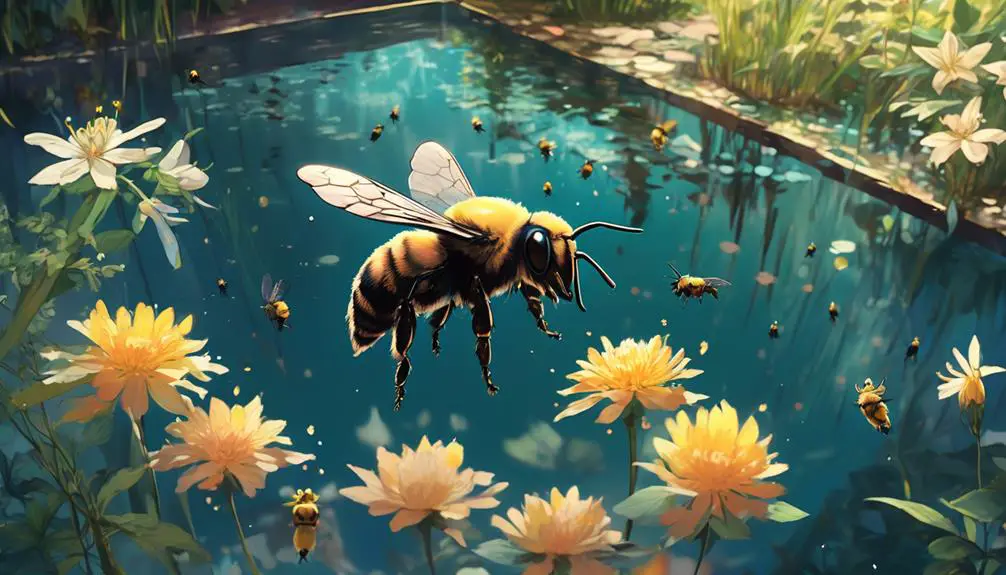
Understanding these unique survival mechanisms of carpenter bees not only provides fascinating insights into their adaptability but also underscores the need for targeted conservation efforts to protect these resilient creatures. Their ability to survive in water means that they can inhabit diverse ecosystems, which broadens the scope of their conservation strategies.
Here's a brief table to help you understand the implications better:
Survival Mechanisms | Implications | Conservation Approach |
|---|---|---|
Ability to Swim | Greater survival odds in varied ecosystems | Develop habitat diversity |
Adaptability | Higher resilience to climate change | Implement climate-smart conservation |
Resilience | Lower extinction risk | Invest in long-term conservation planning |
You see, understanding carpenter bees' swimming ability isn't just an academic exercise; it's crucial for their survival. It guides scientists and conservationists to implement more effective strategies that consider the bees' adaptability and resilience. Every detail, no matter how seemingly insignificant, contributes to a well-rounded, comprehensive approach to bee conservation. Remember, their survival isn't just about them; it's also about the ecosystems they support and, ultimately, the survival of our own species.
Conclusion
In essence, carpenter bees can't swim. Their interaction with water is mainly surface-based, exploiting physics to stay afloat. Observations reveal their struggle in water, often leading to drowning.
This lack of aquatic adaptability underlines the importance of dry, wood-based habitats for their survival. Conservation efforts, therefore, must prioritize preserving such environments, ensuring these industrious insects continue their crucial role in our ecosystem.


